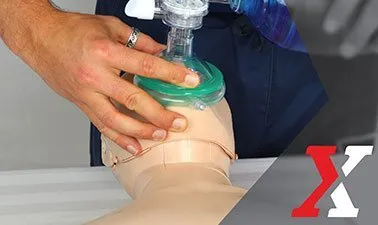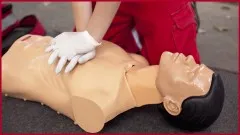
Basic Life Support (BLS) 
BLS is an essential skill for responding to life-threatening emergencies. The latest BLS guidelines emphasize the importance of working together as a team to complete tasks quickly and efficiently. This course provides the necessary knowledge and skills to help save lives. ▼
ADVERTISEMENT
Course Feature
![]() Cost:
Cost:
Free
![]() Provider:
Provider:
Edx
![]() Certificate:
Certificate:
No Information
![]() Language:
Language:
English
![]() Start Date:
Start Date:
1st Dec, 2015
Course Overview
❗The content presented here is sourced directly from Edx platform. For comprehensive course details, including enrollment information, simply click on the 'Go to class' link on our website.
Updated in [March 06th, 2023]
This Basic Life Support (BLS) course provides learners with the knowledge and skills necessary to recognize and provide basic life support in a wide variety of medical emergencies. Learners will gain an understanding of the importance of early recognition and intervention in life-threatening emergencies, and the skills to provide basic life support. The course includes an online study guide, instructional presentation, and certification exam. This course is suitable for medical assistants, nurses, medical students, doctors, and EMS personnel.
[Applications]
The application of this course is to equip learners with the knowledge and skills to respond to life-threatening emergencies. Learners should be able to demonstrate the ability to perform life support techniques, including chest compressions, basic airway management, rescue breathing, AED use for defibrillation, and more. After completing the course, learners should be able to take the certification exam and become certified in Basic Life Support.
[Career Paths]
Job Position Paths:
1. Emergency Medical Technician (EMT): EMTs are responsible for providing medical care to patients in emergency situations. They must be able to assess a patient’s condition, administer basic life support, and transport the patient to a medical facility. EMTs must be knowledgeable in the use of medical equipment, such as AEDs, and must be able to communicate effectively with other medical personnel. The demand for EMTs is expected to grow in the coming years due to an aging population and an increase in medical emergencies.
2. Paramedic: Paramedics are responsible for providing advanced medical care to patients in emergency situations. They must be able to assess a patient’s condition, administer advanced life support, and transport the patient to a medical facility. Paramedics must be knowledgeable in the use of medical equipment, such as AEDs, and must be able to communicate effectively with other medical personnel. The demand for paramedics is expected to grow in the coming years due to an aging population and an increase in medical emergencies.
3. Emergency Room Nurse: Emergency Room Nurses are responsible for providing medical care to patients in emergency situations. They must be able to assess a patient’s condition, administer basic life support, and transport the patient to a medical facility. Emergency Room Nurses must be knowledgeable in the use of medical equipment, such as AEDs, and must be able to communicate effectively with other medical personnel. The demand for Emergency Room Nurses is expected to grow in the coming years due to an aging population and an increase in medical emergencies.
4. Emergency Medical Dispatcher: Emergency Medical Dispatchers are responsible for providing medical care to patients in emergency situations. They must be able to assess a patient’s condition, administer basic life support, and dispatch the appropriate medical personnel to the scene. Emergency Medical Dispatchers must be knowledgeable in the use of medical equipment, such as AEDs, and must be able to communicate effectively with other medical personnel. The demand for Emergency Medical Dispatchers is expected to grow in the coming years due to an increase in medical emergencies.
[Education Paths]
Recommended Degree Paths:
1. Bachelor of Science in Nursing: This degree program provides students with the knowledge and skills necessary to become a registered nurse. It covers topics such as anatomy, physiology, pharmacology, nutrition, and patient care. Students will also learn about the legal and ethical aspects of nursing, as well as the principles of BLS. This degree is becoming increasingly popular as the demand for nurses continues to grow.
2. Master of Science in Emergency Medical Services: This degree program focuses on the management and delivery of emergency medical services. Students will learn about the principles of BLS, as well as the legal and ethical aspects of emergency medical services. This degree is becoming increasingly popular as the demand for emergency medical services professionals continues to grow.
3. Doctor of Medicine: This degree program provides students with the knowledge and skills necessary to become a physician. It covers topics such as anatomy, physiology, pharmacology, nutrition, and patient care. Students will also learn about the legal and ethical aspects of medicine, as well as the principles of BLS. This degree is becoming increasingly popular as the demand for physicians continues to grow.
4. Master of Public Health: This degree program focuses on the management and delivery of public health services. Students will learn about the principles of BLS, as well as the legal and ethical aspects of public health. This degree is becoming increasingly popular as the demand for public health professionals continues to grow.
Course Provider

Provider Edx's Stats at AZClass
Discussion and Reviews
0.0 (Based on 0 reviews)
Explore Similar Online Courses

Neil Degrasse Tyson Teaches Scientific Thinking And Communication

Copywriting Secrets

Python for Informatics: Exploring Information

Social Network Analysis

Introduction to Systematic Review and Meta-Analysis

The Analytics Edge

DCO042 - Python For Informatics

Causal Diagrams: Draw Your Assumptions Before Your Conclusions

Whole genome sequencing of bacterial genomes - tools and applications

First Aid and Bloodborne Pathogens (BBP)

2 How To Save A Life - Advanced


Start your review of Basic Life Support (BLS)